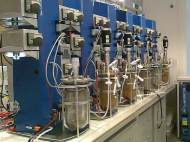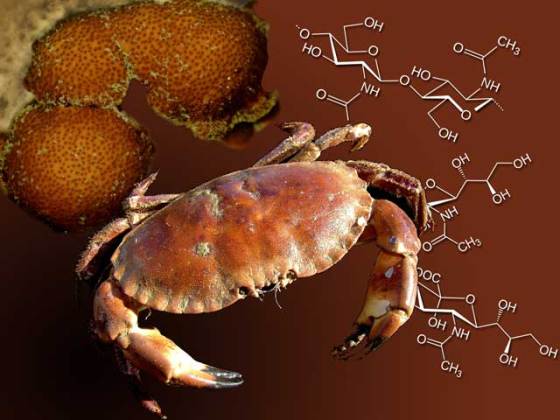Turning chitin into pharmaceuticals with fungi
 Most viral infections are treated with antiviral drugs which are often derived from N-Acetylneuraminic acid (NANA) – a material which costs around fifty times more than gold despite the fact it can be synthesized or obtained from natural sources. Researchers at the Vienna University of Technology found a new way to produce NANA from chitin – the main component of the exoskeletons of arthropods.
Most viral infections are treated with antiviral drugs which are often derived from N-Acetylneuraminic acid (NANA) – a material which costs around fifty times more than gold despite the fact it can be synthesized or obtained from natural sources. Researchers at the Vienna University of Technology found a new way to produce NANA from chitin – the main component of the exoskeletons of arthropods.
They used their vast knowledge about the genetics of the fungus Trichoderma accumulated over the years to create a “chemical factory” which produces important chemicals for the pharmaceutical industry.
“We knew that Trichoderma can degrade chitin – that’s what the fungus naturally does in soil”, said Astrid Mach-Aigner, Vienna UT biotechnologist who led the research. “Usually, Trichoderma breaks down chitin to monomer amino sugars.”
They managed to introduce bacterial genes into the fungus Trichoderma, thus enabling it to perform two extra reaction steps that lead to production of the desired pharmaceutical N-Acetylneuraminic from chitin. As a part of the exoskeletons of arthropods, chitin is second most abundant biopolymer on earth.
It can be found in the carapaces of crustaceans, in the shells of insects, snails and cephalopods and in the cell walls of fungi, and it is estimated that ten billion tons of chitin are formed each year in the sea alone. This makes chitin a very sustainable resource for chemical synthesis.
The newly developed Trichoderma line can now be cultivated in bioreactors and produces NANA from chitin in liquid culture by employing its natural saprophytic activity in combination with the introduction of a bacterial enzyme cascade.
The process has now been patented by the Vienna University of Technology and will be used for low-cost and eco-friendly production of pharmaceuticals on an industrial scale in the near future. They also hope that their work will inspire other researchers to explore other advantages of biopolymers, such as chitin, and stimulate their efficient usage.
For more information, you can read the article published in an open access, peer-reviewed, online journal Microbial Cell Factories: “Synthesis of an antiviral drug precursor from chitin using a saprophyte as a whole-cell catalyst”.










Leave your response!